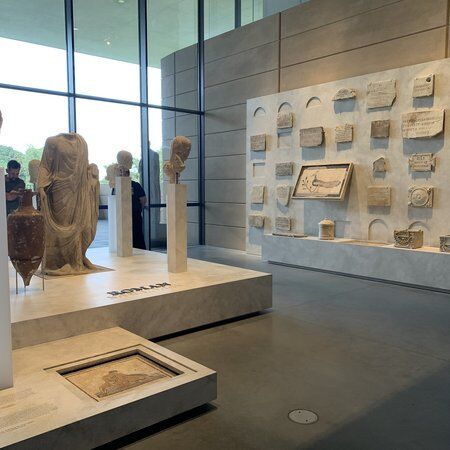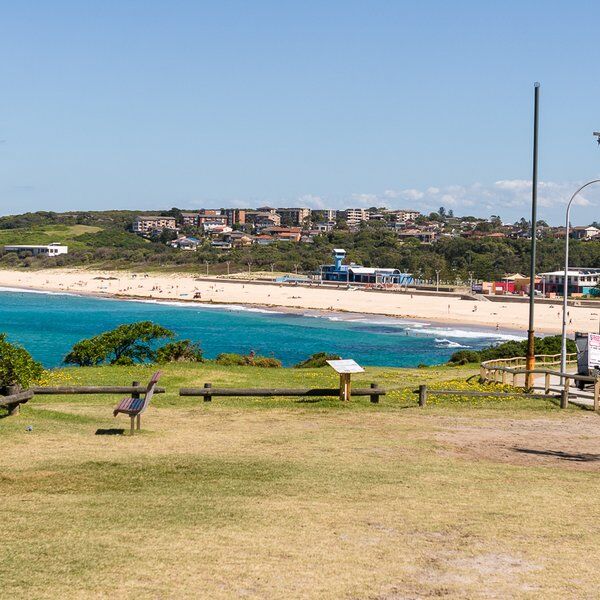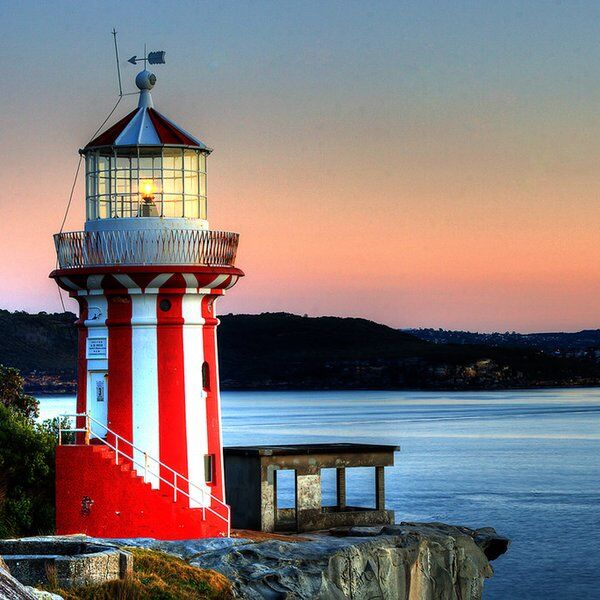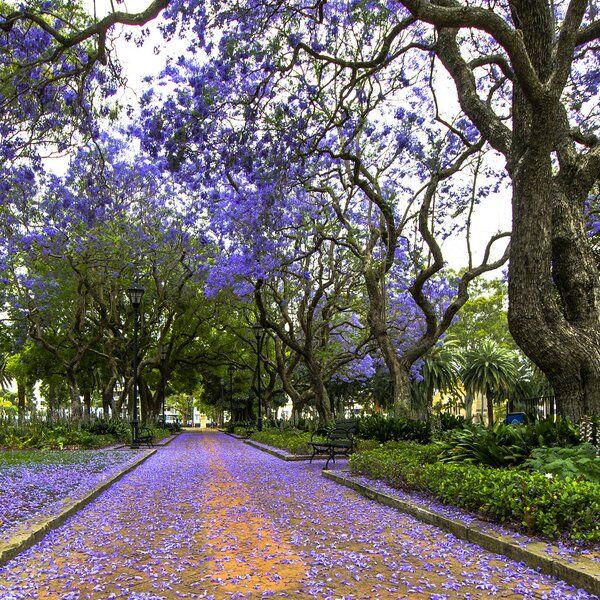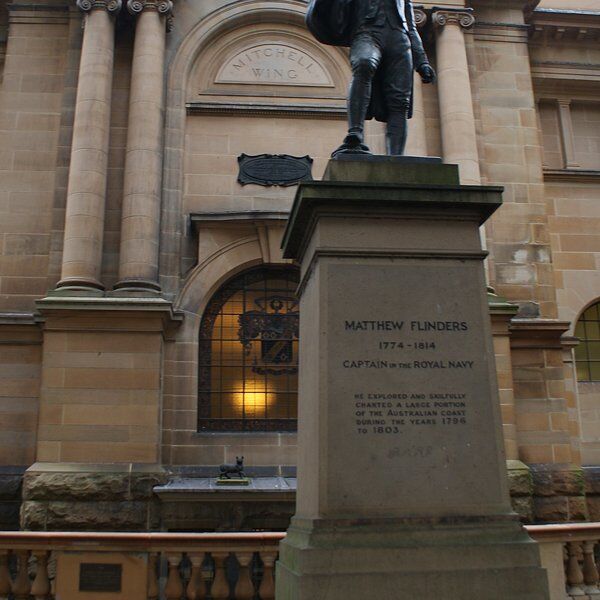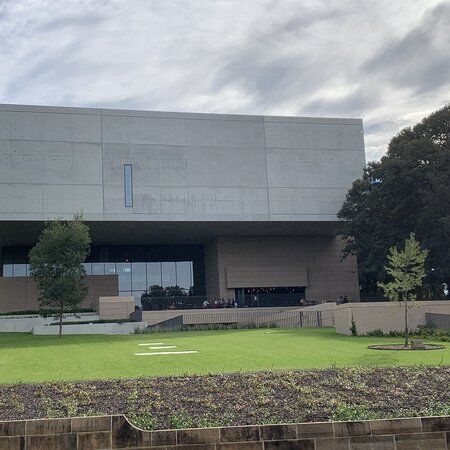
Discover the Chau Chak Wing Museum
"We’ve got an incredible diversity of material and exhibitions, but we’re small enough to really not feel as though you’re missing anything."
As part of the University of Sydney, the Chau Chak Wing Museum contains three significant collections in an impressive 2,000 square meters of exhibition space across four levels. The Nicholson Collection is the largest collection of antiquities in the Southern Hemisphere, the Macleay Collection contains some of Australia’s most important natural history objects, and the University Art Collection features over 8,000 historical and contemporary works. Chau Chak Wing also includes a temporary exhibition space with ever-changing displays. Situated on Gadigal land, the museum is now triple the size of its original capacity, allowing about three percent of the collections to be displayed at any time.
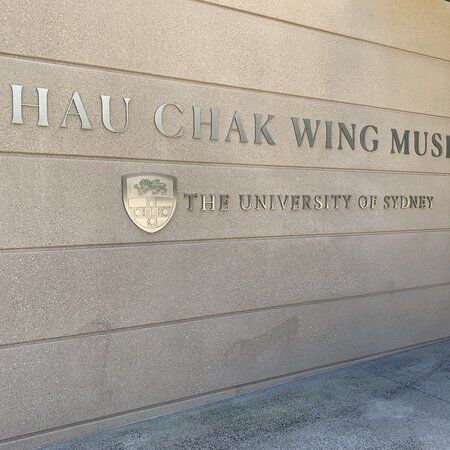
The Nicholson Collection: Origins and Evolution
Founded in 1860 by Sir Charles Nicholson, a former University Provost, the Nicholson Collection began with his donation of Etruscan, Greek, Roman, and Egyptian antiquities. Nicholson's intention was to establish a museum that would promote the objectives of the University of Sydney. By 1870, the University of Sydney's Museum of Antiquities, later nicknamed the Nicholsonian Museum, housed over 3,000 artefacts.
Today, the Nicholson Collection at the Chau Chak Wing Museum is the largest collection of antiquities in the Southern Hemisphere, encompassing nearly 30,000 artefacts from Egypt, Greece, Italy, Cyprus, and the Middle East. The collection offers important insights into the ancient cultures of the Mediterranean, North Africa, the Middle East, and Europe, spanning over 10,000 years from the pre-Neolithic to the late mediaeval period. Many artefacts are accessible online, and researchers can apply to study the collection.
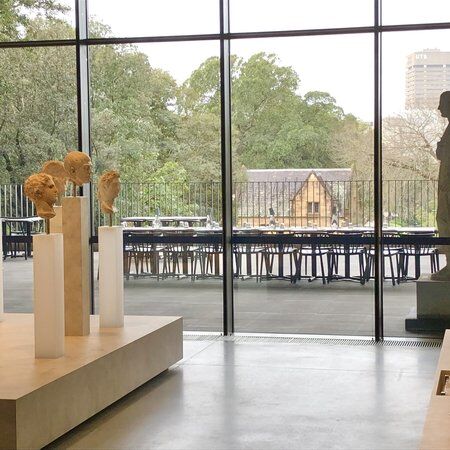
The History of the Chau Chak Wing Museum
The Chau Chak Wing Museum originated with the creation of the Nicholas Collection of antiquities in 1860. Over the years, this initial collection expanded to include the Macleay Collection and the University Art Collection. However, it wasn’t until 2005 when the three were unified under the Sydney University Museums umbrella.
Despite having three important collections, there was no dedicated museum space until a Chinese-Australian businessman Chau Chak Wing made a generous donation of $15 million, in 2015. This donation was to fund the construction of the Chau Chak Wing Museum. Other significant contributors included Penelope Seidler, the Ian Potter Foundation, and the Nelson Meers Foundation. The museum officially opened its doors on November 18, 2020.

Creating the Chau Chak Wing Museum
Chau Chak Wing Museum was designed by the Sydney architectural firm Johnson Pilton Walker, with input from four different architects. This allowed each of the four levels of exhibition space, in the five-story museum, to have a unique quality, preventing monotony. The exhibitions in these spaces are carefully curated to explore art, natural history, and cultural artefacts, with an emphasis on recognizing the contributions of Indigenous Australian community throughout.
On the outside, Chau Chak Wing Museum's sleek, contemporary architecture contrasts with the traditional sandstone buildings of the Camperdown campus. But there is also an integration of Indigenous Australian elements, with a forecourt displaying a replica of a pre-invasion Aboriginal petroglyph and a Welcome to Country prominently featured in the foyer.
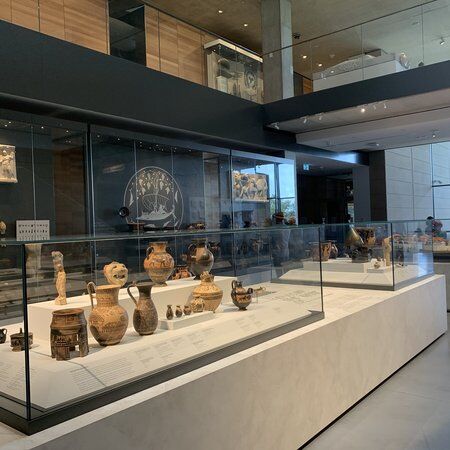
Exploring Chau Chak Wing Museum's Collections
"It’s a space for everybody."
The museum contains six main galleries—Ian Potter Gallery, Macleay Gallery, Nicholson Gallery, Penelope Gallery, Power Gallery, and China Gallery—offering a mixture of art, history and science. To explore the highlights of the collection and learn about Gadigal culture and the history of the surrounding grounds, there are guided tours available. On the Quadrangle Heritage Tour, visitors can learn about the neo-gothic building's gargoyles, grotesques, sandstone, and stained glass. Experts also share stories of the architects, scholars, and students who have contributed to its legacy.
Let’s explore the collections in more detail:
The Cypriot Collection
The Cypriot antiquities in the Nicholson Collection include a diverse range of items, such as ceramics, sculptures, bronze tools, and glasswork. The collection began with a single artefact in 1860, donated by Sir Charles Nicholson and then grew after the acquisition of excavated artefacts. The collection’s growth was also aided by the Department of Antiquities, Cyprus, the Metropolitan Museum of Art, and exchanges with Stanford and Cambridge universities.
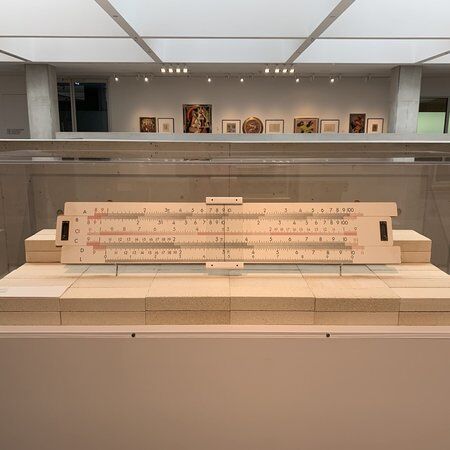
The Egyptian Collection
Artefacts in the Egyptian collection range from the Neolithic to Roman and Coptic periods. It includes mummified bodies, coffins, statues, inscriptions, and everyday items. Today the Mummy Room, a dedicated space for the museum’s four mummies, reveals the results of the Mummy Project, which uses modern scientific techniques to uncover details about these ancient Egyptians.
Sir Charles Nicholson formed the nucleus of the collection during his travels down the Nile in 1856-57 and 1862. His acquisitions were catalogued by Joseph Bonomi at the British Museum before being sent to Australia. Notable items include a bust of Horemheb and a Hathor column capital from the Temple of Bastet, Bubastis.
From 1888 to 1963, the University of Sydney sponsored the Egypt Exploration Fund, acquiring nearly 1,000 artefacts from various excavation sites. Generous donations from tourists, migrants, and Australian Defense Force personnel during World War I and II further augmented the collection.
The Greek Collection
The Greek collection features items from the Bronze Age to the late Hellenistic period, including ceramic vessels, bronze and terracotta figurines, marble sculptures, jewelry, and plaster cast replicas. The initial Greek artefacts were acquired by Sir Nicholson during his travels from 1856-58. The collection also includes a series of plaster cast and electrotype replicas essential for teaching art history and classical archaeology.
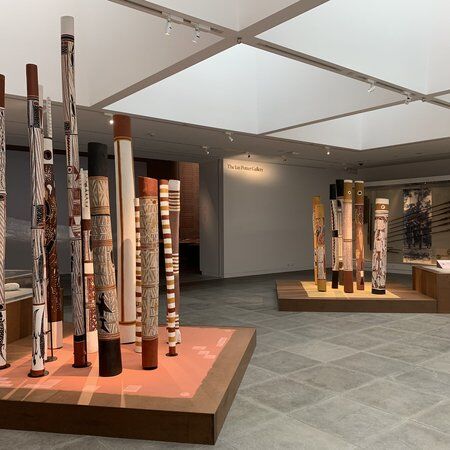
The Italian Collection
The Italian collection showcases artefacts from Etruria, South Italy, and the Roman Empire, including Etruscan funerary urns, South Italian ceramics, Roman sculptures, and everyday items. Nicholson's travels in 1857-58 resulted in approximately 500 artefacts, forming the foundation of the collection. A significant addition was a life-sized sculpture of Hermes, donated by Nicholson's sons in 1935. Under the guidance of Arthur Dale Trendall and Alexander Cambitoglou, the collection became renowned for its South Italian ceramics.
The Middle Eastern Collection
The Middle Eastern collection began in 1926 with donations from excavations made by the British Museum and then from government organizations and international museums. The University of Sydney's sponsorship of the British School of Jerusalem's excavations at Jericho in the 1950s added over 1,500 artefacts.
Today, the Middle Eastern Collection—grown through donations from migrants, tourists, diplomats, and scholars—contains artefacts from the Levantine coast, Mesopotamia, and the Indus Valley. These items include a plastered skull from Jericho and Assyrian carvings from Nineveh. The collection

Northern-Central European Collection
The Northern-Central European Collection has an important exhibition of over 800 European stone tools, materials from the Neolithic to mid-first millennium AD, and Medieval to early modern artefacts. Initially donations came from the British Museum in 1862. These were supplemented by Sir Nicholson’s own findings in 1864.
The Numismatics Collection
The Nicholson Collection's numismatics collection includes roughly 9,000 coins, paper notes, medals, and electrotype replicas. It features ancient Mediterranean and Middle Eastern currencies, colonial Australian and American currencies, and modern European items.
Early contributions included Roman coins from M.S. Marchange, Sir Charles Nicholson, and Sir John Young. The collection expanded with the acquisition of coin hoards and donations from individuals like Crown Prince Hassan of Jordan and Jon Hosking. The Chau Chak Wing Museum also holds additional numismatic materials related to the University of Sydney and New South Wales.
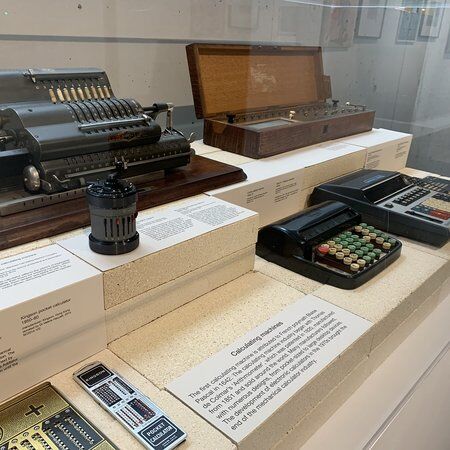
Highlights at the Chau Chak Wing Museum
Current highlights at the Chau Chak Wing Museum include:
- Real Mummies: The Mummy Room features four Egyptian mummies: Meruah, Padiashaikhet, Horus, and Mer-Neith-it-es, who lived between 1200 BC and 100 AD.
- The Best Beaches in Sydney This Winter: "Coastline" exhibition takes visitors on an art history tour of beaches, including works by artists like Conrad Martens and Arthur Streeton.
- A Chinese Deity of Wisdom: The inaugural exhibition in the China Gallery, "Auspicious," features a bronze statue of Wenshu, a deity of wisdom from the Ming dynasty.
- Major Exhibition of Aboriginal Art: "Gululu dhuwala djalkiri: Welcome to the Yolŋu Foundations" showcases nearly 1,000 Yolŋu artworks, developed in collaboration with Elders and art communities.
- The Oldest Writing in the World: The Macleay Galleries display cuneiform inscriptions and other artefacts from Mesopotamia, offering a glimpse into ancient Middle Eastern life.
- A (Really) Big Beetle: The titan beetle (Titanus giganteus), one of the largest beetles in the world, can be seen here, with a fascinating history of how it came to be in the collection.
- Ambassadors: An ongoing First Nations display, presenting cultural materials that convey the ancient knowledge of the country.
- Consuelo Cavaniglia: Seeing Through You: This major contemporary art project, commissioned specifically for the museum, engages with the extensive collections and architecture.
- Hercules: Myth and Legacy: Explore Hercules' labours through art and cultural artefacts.
- Impressions of Greece: Juxtaposes ancient Greek artefacts with modern Greek landscapes by William J Woodhouse.
- Ancient Cultures of the Middle East: From Ice Age villages to the Islamic world, exploring early cities, writing, and religion.
- Roman Spectres: Stories of life in the vibrant cities of the Roman world brought to life through stone inscriptions.
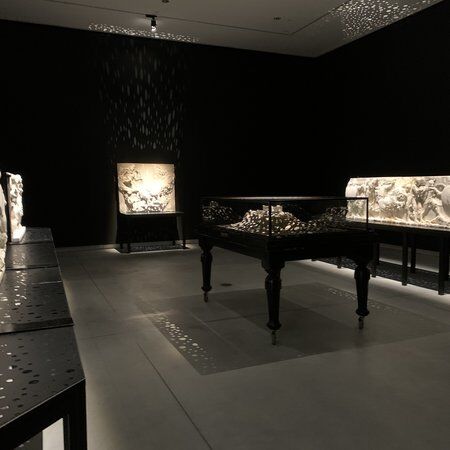
Visiting the Chau Chak Wing Museum
The museum is open seven days a week: Monday to Friday from 10:00 am to 5:00 pm, and weekends from 12:00 pm to 4:00 pm. It is closed on public holidays. Facilities include a café, a gift shop with items like the Museum Memory Game, complimentary lockers, a parents' room, free Wi-Fi, and accessibility features like wheelchairs and Enchroma glasses.
Sounds Sydney, the museum’s café, is a relaxing spot to enjoy coffee and meals with a view of Victoria Park. Managed by The Little Marionette, the café is open from 9:30 am to 4:30 pm on weekdays, with extended hours on Thursdays and limited weekend hours.
The museum is a 20-minute walk from Redfern Station or a short bus ride from Central Station. There is limited parking at Chau Chak Wing, which includes designated accessible parking bays. Or to help the environment there are also secure bicycle racks and repair stations onsite.

Explore Sydney with CityDays
If you want to discover other Sydney attractions in a more comprehensive way—with rest stops at cafes and bars along the way—why not embark on a CityDays Scavenger Hunt in Sydney, and in particular our Secrets of the CBD Hunt?
Scavenger Hunt tours are a great way to bring family and friends—or even dates—together for an afternoon of great fun and adventure, solving clues and snapping photos. Clues will lead you to the big sights and those that you'd walk straight past.
Our Secrets of the CBD Hunt is the perfect way to experience the city, and culminates at the historic Rocks. For more information about our Sydney Scavenger Hunts then click here: Sydney Scavenger & Treasure Hunts | CityDays.
